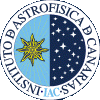

|
PACS Science |
|
The Herschel MissionThe Far Infrared and Submillimetre Telescope FIRST is ESA's cornerstone mission designed to study the universe in a largely unexplored wavelength regime, with an launch year 2008. A passively cooled 3.5m telescope provides the opportunity for high spatial resolution, sensitive observations over the range from 60 to 670 microns. Main scientic drivers of the FIRST mission include Investigations of the distant universe, studying the history of star formation and activity in galaxies through extensive surveys and dedicated follow-up observations. Studies of the origins of stars through photometric and spectroscopic surveys of star forming regions and pre-stellar condensations. Physics and chemistry of the interstellar medium. Solar system studies. The instrument complement selected for FIRST to achieve these goals includes a 60-210 microns cam- era/spectrometer (PACS), a 200-670 microns camera/low resolution spectrometer (SPIRE) and a hetero- dyne high resolution spectrometer (HIFI).
PACS The basic concept of PACS is to provide
Scientic goals
CreditsThe contents of this page are based on the Science Requirements Document and the official home page for PACS edited by Eckhard SturmGo back to PACS Instrument page
PACS HOME -
PACS SCIENCE -
INSTRUMENTS -
OBSERVER SUPPORT
sigroth@iac.es http://research.iac.es/proyecto/herschel/pacs This file was last modified on 21 May 2007.
|